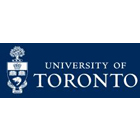- اخبار و مقالات
- Find usIDP AustraliaIDP BahrainIDP BangladeshIDP CambodiaIDP CanadaIDP ChinaIDP EgyptIDP GhanaIDP Hong KongIDP IndiaIDP IndonesiaIDP IranIDP JordanIDP KenyaIDP KoreaIDP KuwaitIDP LebanonIDP MalaysiaIDP MauritiusIDP Middle EastIDP NepalIDP New ZealandIDP NigeriaIDP OmanIDP PakistanIDP PhilippinesIDP Saudi ArabiaIDP SingaporeIDP Sri LankaIDP Taiwan, ChinaIDP ThailandIDP TurkeyIDP UAEIDP VietnamIDP Corporate
- Social
- فارسی
- Where we operate
- Courses
- Scholarships
- IELTS
- About IDP
- Arrival services
- Arrival services
- Money transfer
- Student health cover
- Student banking
- Accommodation
- اخبار و مقالات
- Find us
- Find us
- Find nearest IDP offices
- IDP Australia
- IDP Bahrain
- IDP Bangladesh
- IDP Cambodia
- IDP Canada
- IDP China
- IDP Egypt
- IDP Ghana
- IDP Hong Kong
- IDP India
- IDP Indonesia
- IDP Iran
- IDP Jordan
- IDP Kenya
- IDP Korea
- IDP Kuwait
- IDP Lebanon
- IDP Malaysia
- IDP Mauritius
- IDP Middle East
- IDP Nepal
- IDP New Zealand
- IDP Nigeria
- IDP Oman
- IDP Pakistan
- IDP Philippines
- IDP Saudi Arabia
- IDP Singapore
- IDP Sri Lanka
- IDP Taiwan, China
- IDP Thailand
- IDP Turkey
- IDP UAE
- IDP Vietnam
- IDP Corporate
- Social
- LANGUAGE_SWITCHER
- آموزش IDP /
- کالج ها و دانشگاه ها /
- Canada /
- University of Toronto /
- Honours Bachelor of Science...

Honours Bachelor of Science in Computer Science - Scientific Computing - St.George
At UNIVERSITY OF TORONTO
Location
Canada
صلاحیت
Bachelor Degree with Honours
شهریه ها
CAD61720
(2025)
مدت زمان
4 Year(s)
پذیرش بعدی
08 September 2025
امتیاز ورود
6.5
آیلتسCOURSE_INFO
In trying to make sense of what we can get a computer to do, a wide variety of topics come up. There are, however, two recurring themes. The first is the issue of scale: how big a system can we specify without getting lost in the design, or how big a task can a computer handle within reasonable bounds of time, memory, and accuracy A large part of Computer Science deals with these questions in one form or another. In the area of programming languages and methodology, for example, we look for notations for describing computations, and programming methodologies that facilitate the production of manageable and efficient software. In the theory of computation area, we study resource requirements in time and memory of many basic computational tasks.
The second theme concerns the scope of computation. Computers were originally conceived as purely numerical calculators, but today, we tend to view them much more broadly. Part of Computer Science is concerned with understanding just how far computational ideas can be applied. In the area of artificial intelligence, for example, we ask how the function of the human brain can be expressed in computational terms. In the area of human-computer interaction, we ask what sorts of normal day-to-day activities of people might be supported and augmented using computers. Scientific computing studies the world around us. Known and unknown quantities are related through certain rules, e.g. physical laws, formulating mathematical problems. These problems are solved by numerical methods implemented as algorithms and run on computers. The numerical methods are analyzed and their performance (e.g. accuracy, efficiency) studied. Problems, such as choosing the optimal shape for an airplane (to achieve, for example, minimal fuel consumption), finding the fair price for derivative products of the market, or regulating the amount of radiation in medical scans, can be modelled by mathematical expressions and solved by numerical techniques.
- کمک هزینه تحصیلی
- دوره های کارآموزی
نیازمندی های ورود به University of Toronto
International Baccalaureate Diploma, with English HL or SL.
International Baccalaureate (IB) English - The minimum requirement is a score of at least 4 (predicted or final) in Higher or Standard Level English A: Literature or English A: Language and Literature. HL English B is not acceptable.
IELTS - The minimum requirement is an overall band of 6.5, with no band below 6.0.
TOEFL IBT - The minimum requirement is a total score of 89 with 22 on the Writing section.
ددلاین اپلیکیشن
تاریخ ددلاین مشخص نیست با یک مشاور IDP صحبت کنید برای اطلاعات بیشتر
Further information
If you aren't eligible for the above entry requirements, you might ant to explore pathway options at University of Toronto. If you want to find out more, speak to our counsellors.
رتبه جهانی
21st / 1250
رتبه جهانیدانش اموزان ما چگونه فکر می کنند؟
هنوز نظری در مورد این موسسه دریافت نکرده ایم
پیشنهادات برای شما
- کارشناسی
- Canada
- نوع کمک هزینه تحصیلی: Fee waiver/discount
- کارشناسی
- Canada
- نوع کمک هزینه تحصیلی: Fee waiver/discount
- کارشناسی
- Canada
- نوع کمک هزینه تحصیلی: Fee waiver/discount
- کارشناسی
- Canada
- نوع کمک هزینه تحصیلی: Fee waiver/discount
- کارشناسی
- Canada
- نوع کمک هزینه تحصیلی: Fee waiver/discount
- کارشناسی
- Canada
- نوع کمک هزینه تحصیلی: Fee waiver/discount
- کارشناسی
- Canada
- نوع کمک هزینه تحصیلی: Fee waiver/discount
- کارشناسی
- Canada
- نوع کمک هزینه تحصیلی: Fee waiver/discount
Your action plan
گام 1
Shortlist your courses
Choose the best three courses you’re most likely to pursue.
گام 2
Check your eligibility
Get an instant in-principle offer for courses with the IDP FastLane tag.
گام 3
Apply through IDP Live
Fill out the form once and use it to apply to multiple courses.
اپلیکیشن فست لین IDP چگونه کار می کند؟
با "پذیرش مشروط" FastLane ظرف چند دقیقه می توانید در مورد پذیرفته شدن تان در دانشگاه با خبر شوید
یک موسسه یا دوره را انتخاب کنید
یک پروفایل آکادمیک ایجاد کنید
درخواست خود را برای "پیشنهاد مشروط" ارسال کنید
موسسه(ها) مورد نظر تان ظرف مدت چند دقیقه تصمیم خود را به شما اعلام خواهد کرد
برای درخواست پذیرش با کمک یک مشاور آماده شوید




